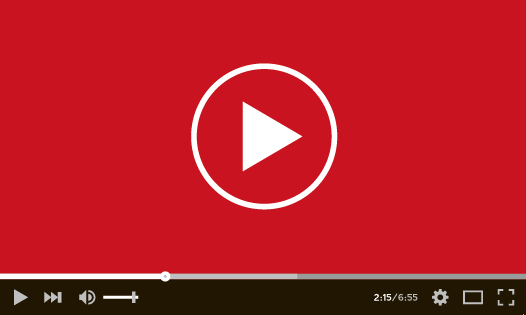Imagining the digital landscape in a pre-YouTube world is actually quite difficult now. You have to go back to April 23, 2005 for the first video upload on the platform, of a young man named Jawed Karim talking awkwardly in front of a herd of elephants. Lasting just 19 seconds, ‘Me at the Zoo’ contains around 40 words – one for every million people who would watch it in the following 12 years or so. As of September 2017, it remains the only video on Karim’s channel; he was, of course, a founder of the channel and employee of Paypal.
How times have changed. Some of the headline statistics for YouTube are mind-boggling. Approximately 300 hours of video are uploaded to the channel every minute, comprising some of the 5 billion videos watched per day. Its creative counterpart Vimeo possesses figures that might be dwarfed, but are still impressive; 280 million monthly viewers and 35 million members on a platform used by 20% of B2B marketers in North America to distribute content. There’s some data that suggests Facebook posts with video posts offer a 135 per cent greater reach than a post with just a photograph, and predictions that by 2021, 82 per cent of all internet traffic will be video-based.
So video somehow seems to be omnipresent, but with enough room to grow further; whether it’s a simple video interview, a VR simulation, a first-person adventure, a how-to guide, a mini documentary, or an elaborate set piece using external actors – the scope of video is now almost limitless. Therefore, why isn’t everyone doing it? Simply put, many companies are behind the curve; in a world where nearly 2 million UK SMEs don’t even have a website one can imagine that video is way down on the list of importance.
The drawbacks of video that are usually brought up include the complexity of filming and editing, the costs, and the consumption of time. These disadvantages and drawbacks have long since been banished.
For example, you don’t need to hire an external company to film any more; a smartphone, an external lavalier mic, a tripod or gimbal (support for a mobile device), and maybe some external lighting, and you’ve got the tools to grab excellent footage of practically anything. Combine that with a strong editing package such as Final Cut Pro, Adobe Premier, Apple iMovie or similar, and maybe purchase some music and you’re done. Add DSLRs and/or micro cameras as and when you need, and you’ve got a fully functional production studio for as little as £5,000 or less.
Related: How to film a YouTube video
The tougher part is what you do next; the story you tell. In a recent Forbes interview, Hope Horner of video marketing and production Lemonlight says that videos “allow you to build an emotional connection with your audience and transmit the feel, tone, and details of your brand in 60 seconds or less.” Capturing that brand feel and what is right for a customer, and making sure that story is seen and heard, is as important as the technical aspects of a shoot.
As a case in point, player movements conducted during the recent summer football transfer window were shared on wildly popular social media platforms, and video was the chosen messenger. Where once we saw a rather bland, staged still photograph of a sheepish striker awkwardly signing a contract in an office, now we see a more elaborately constructed story, told in several episodes that can be produced in a few minutes for a few hundred pounds but tell the story of a £50 million transaction.
The ridiculous hype of football served us a cinematic and audio-visual soup that lasted for a week or two in the heart of the window; in the space of a month we went from simulated WhatsApp conversations between Aston Villa players to Yeovil players arriving on Snapchat maps to rhymes between Jaap Stam and Batman to overhyped ‘movies’ and then parodies of those ‘movies’. The return of erstwhile England captain and Manchester United striker Wayne Rooney generated more than 4m views and almost 200,000 engagements alone.
Sure, the written word still has a massive part to play in the online marketing arena; in an oblique reference to its importance as much as 85% of Facebook videos are enjoyed without sound, as consumers process them through subtitles. But video is improving at a pace far beyond written content, and will continue to do so.
The ease of holding up your smartphone and pressing record means that the delineation between content creator and mobile broadcaster has become blurred. Since launching in April 2016, Facebook Live has become a go-to arena for broadcasting when you feel like it. It’s estimated that one in five of all the videos that appear on the social media site are live, with big money paid out to influencers and stars to promote the service. From Ted Yoder’s hammered dulcimer version of Everybody Wants to Rule the World (99 million views) to Candace Payne’s Chewbacca mask (170 million views), we can all now be stars.
When Karim shot his video in San Diego Zoo 12 years ago, the speech was poor quality and footage of the elephants was grainy. Now video itself is the big beast.






